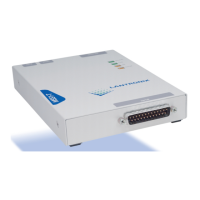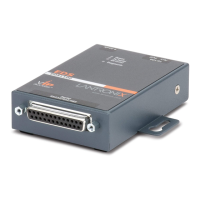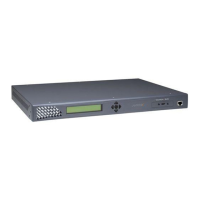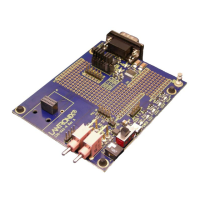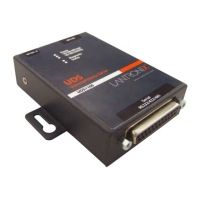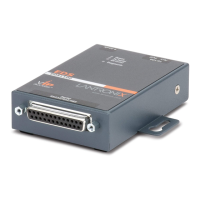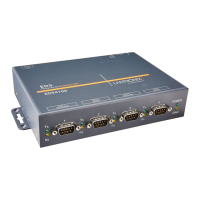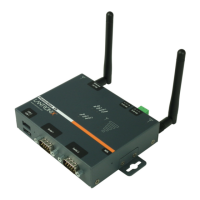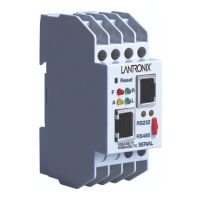Index-iii
Specifications E-1
Supplying 2-4
Troubleshooting B-1
Power connector 2-1, 2-2
Power LED 2-2
Power-up troubleshooting B-1
Preferred port service 4-12
Privileged user 3-1
Problem report procedure A-1
Prompts
Boot 3-6, B-2, B-4
Local 3-4, B-2
R
RARP 1-1, 2-5, 3-4, B-3, B-5, D-2
RARPD process B-3
Troubleshooting B-3
Rebooting B-5
Reloading software 1-2, B-5, D-1
MOP D-2
TCP/IP D-2
Remote console 1-2, 3-1, 3-5, 3-6
Reset
Button 2-2, 4-1
Initialize Delay command 4-1, 5-7
Initialize Factory command 4-1
Restoring defaults 4-1, B-5
RJ45 2-1, 2-2, C-1
Rlogin 1-1, 3-2, 3-6
RS-232 2-4, C-2
RS-422 4-7
RS-485 4-5, 5-5, C-1
Four-wire mode 4-6
Termination 4-7
Two-wire mode 4-6
TXDrive 4-7
RTS/CTS 4-10
S
Screw terminal port 2-1, 2-2, 2-4
SDK 1-2, 5-7
Modem cards 2-7, 4-17
Security 1-2
Serial
Access mode 4-8
Dedicated port service 4-12
Device, connecting 2-4
Flow control 4-10
LED 2-5
Modem control 4-8
Modem signals 4-10
Port 2-1, 2-2, 3-6, 4-7, C-1
Port parameters 2-4, 4-10
Preferred port service 4-12
Prompts 4-12
Serial console 3-4, 3-6
Serial LED 2-2
Serial tunnel 5-8
Server 1-3
Session 1-3
SNMP 4-4
Community name 1-3
Traps 4-4
Sockets 3-1, 5-1
TCP/IP 5-2
Software Developer Kit (SDK) 1-2
Software file B-3, D-1
Software updates D-1
Web D-1
Stop bits 4-10
Subnet mask 4-2
Superuser privileges 3-3
T
TCP/IP 3-5, B-1
Configuration 4-2
Reloading software D-2
Socket connections 5-2
Support information 1-1
Telnet 1-1, 3-1
Environment strings 5-3
Incoming connections 3-6
Outbound connections 3-7
Password protection 3-2
Temperature limitations E-1
Termination, RS-485 4-7
TFTP D-2
ThinWeb Manager 1-2, 3-1, 3-5
Troubleshooting B-1–B-6
BOOTP B-3
DHCP B-2
Flash (software) updates D-3
Modems B-4
Power-up B-1
RARP B-3
Tunnel, serial 5-8
TXDrive 4-7
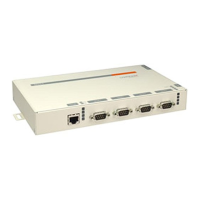
